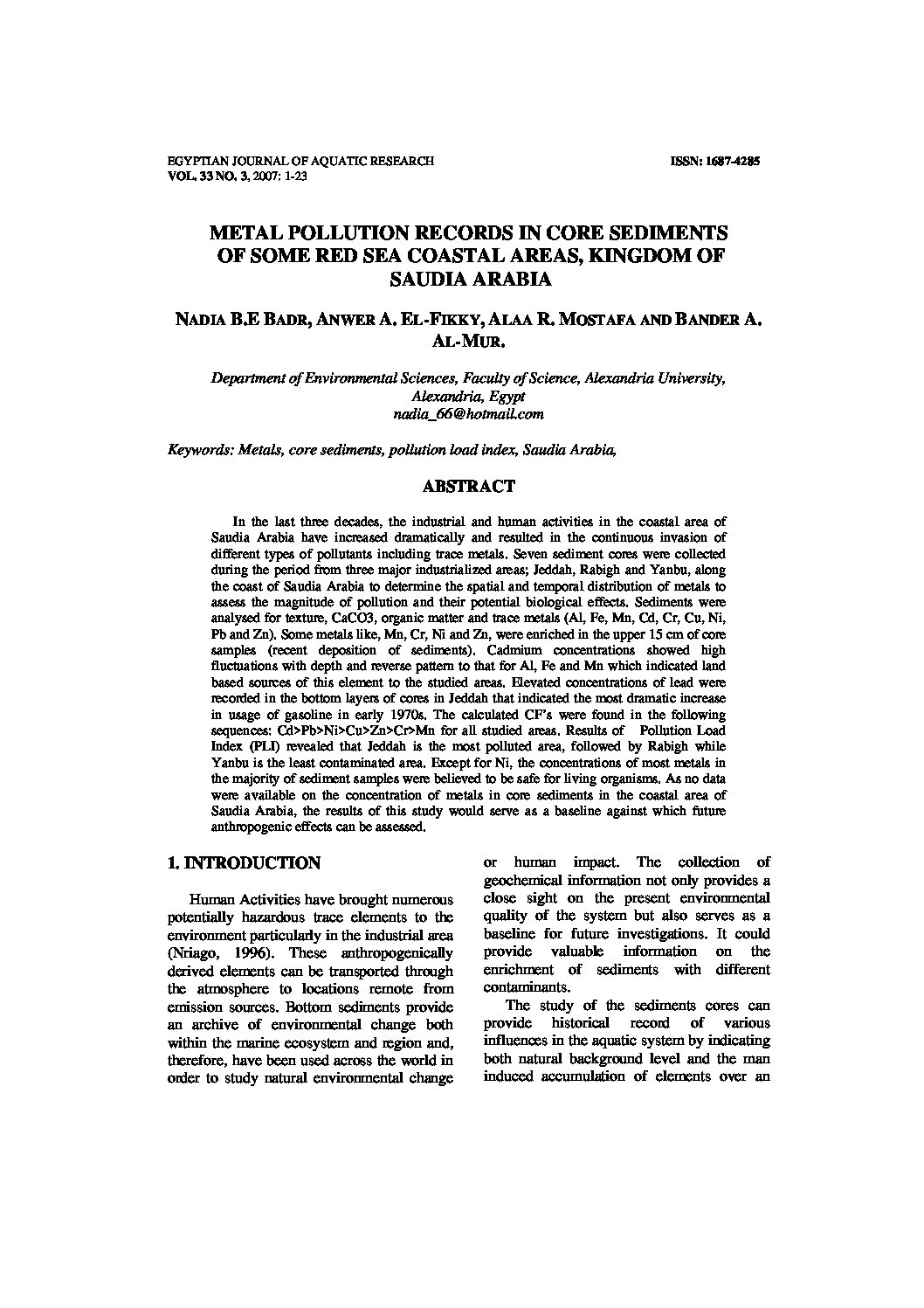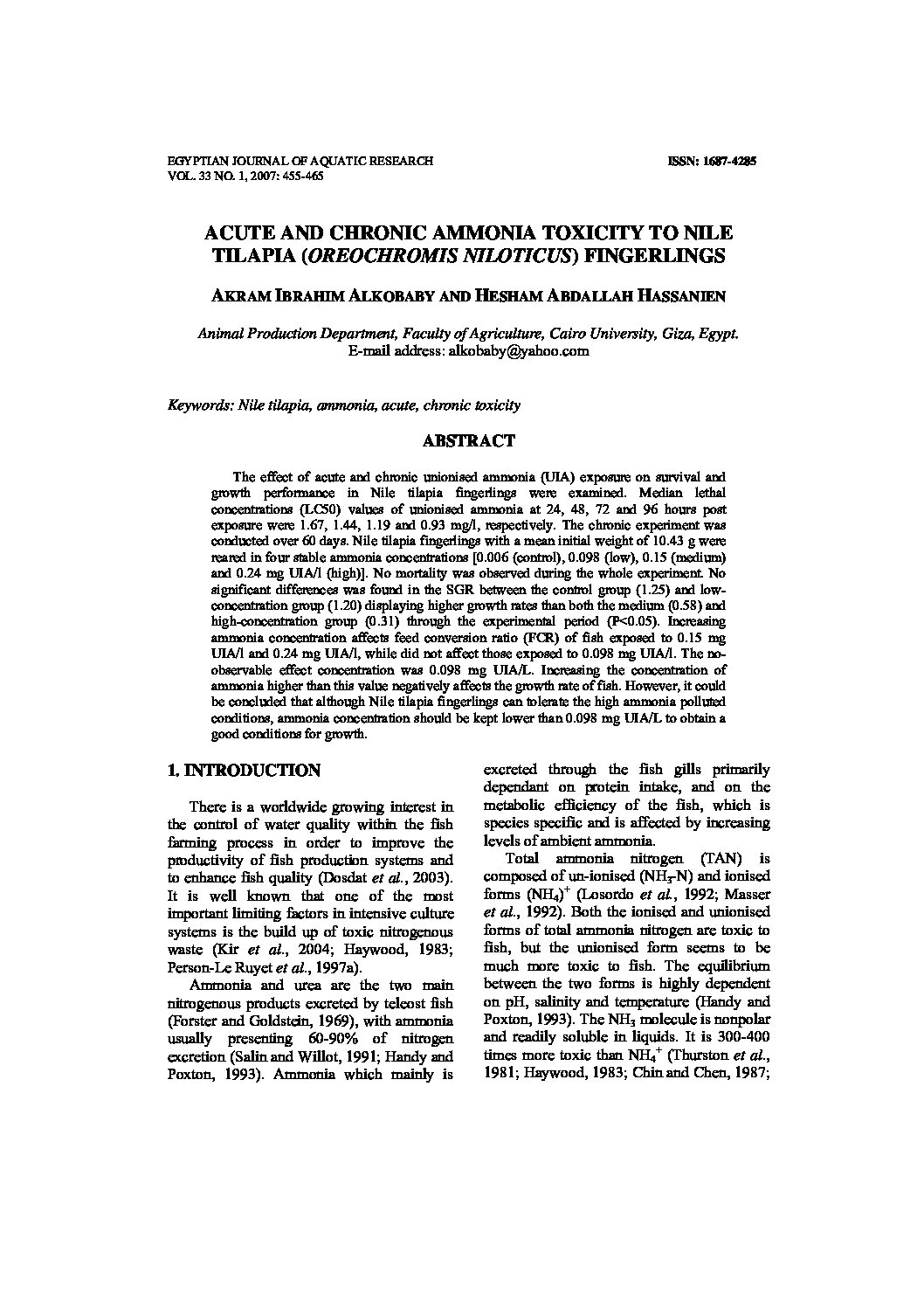Categories
vol-33METAL POLLUTION RECORDS IN CORE SEDIMENTS
OF SOME RED SEA COASTAL AREAS, KINGDOM OF
SAUDIA ARABIA
NADIA B.E BADR, ANWER A. EL-FIKKY, ALAA R. MOSTAFA AND BANDER A.
AL-MUR.
Department of Environmental Sciences, Faculty of Science, Alexandria University,
Alexandria, Egypt
[email protected]
Keywords: Metals, core sediments, pollution load index, Saudia Arabia,
ABSTRACT
In the last three decades, the industrial and human activities in the coastal area of
Saudia Arabia have increased dramatically and resulted in the continuous invasion of
different types of pollutants including trace metals. Seven sediment cores were collected
during the period from three major industrialized areas; Jeddah, Rabigh and Yanbu, along
the coast of Saudia Arabia to determine the spatial and temporal distribution of metals to
assess the magnitude of pollution and their potential biological effects. Sediments were
analysed for texture, CaCO3, organic matter and trace metals (Al, Fe, Mn, Cd, Cr, Cu, Ni,
Pb and Zn). Some metals like, Mn, Cr, Ni and Zn, were enriched in the upper 15 cm of core
samples (recent deposition of sediments). Cadmium concentrations showed high
fluctuations with depth and reverse pattern to that for Al, Fe and Mn which indicated land
based sources of this element to the studied areas. Elevated concentrations of lead were
recorded in the bottom layers of cores in Jeddah that indicated the most dramatic increase
in usage of gasoline in early 1970s. The calculated CF’s were found in the following
sequences: Cd>Pb>Ni>Cu>Zn>Cr>Mn for all studied areas. Results of Pollution Load
Index (PLI) revealed that Jeddah is the most polluted area, followed by Rabigh while
Yanbu is the least contaminated area. Except for Ni, the concentrations of most metals in
the majority of sediment samples were believed to be safe for living organisms. As no data
were available on the concentration of metals in core sediments in the coastal area of
Saudia Arabia, the results of this study would serve as a baseline against which future
anthropogenic effects can be assessed.







